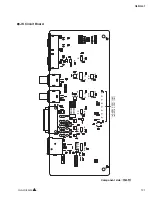
4
1.2 Operation of the contact inputs
The module has 4 configurable NO/NC contact inputs. By activating the inputs, notifications
can be sent by SMS or call up to 4 phone numbers, or by e-mail, according to the settings.
This function can be used for e.g. sending notification by SMS or email about the state of
tamper or other switches, control panel error or other outputs. Notification by call is not
available if the “
Online mode
” is enabled, that is if you wish to control the system over the
internet as well or use the services that require continuous internet connection.
Input IN1 is assigned by factory default to doorbell function, which means that if the system
is used with smartphone application and input IN1 is activated, a ringing notification will be
sent to the users’ smart devices for which this option (permission) is enabled. Permissions
can be configured at user setting. This function uses Push notification service.
Input IN2 is assigned by factory default to failure notification function, which means that if
the system is used with smartphone application and input IN2 is activated, the system sends
“
Technical or device failure
” notification to the users’ smart devices by Push notification
service.
The properties of the functions assigned to the inputs mentioned above (e.g. message,
assigning to other input) cannot be changed.
Inputs IN3 and IN4 are assigned by factory default to gate position limit failure notification
function. In case of using control mode 1 or 2, the position limit switch of gate
“A” should be
connected to input IN3, while the position limit switch of gate “B” should be connected to
input IN4. In case of control modes 3, 4
and 5 the gate’s position limit switch should be
connected to input IN3. If the position limit switch is connected, the device can send
notifications via Push and/or SMS when the gate fails to open or close.
2 Processing of personal data
The users can control the system with the help of their usernames, phone numbers and/or
smartphone application identifiers, therefore, in order to operate the system it is necessary
that the users who wish to use the system to provide their names (usernames) and phone
numbers (hereinafter referred to as personal data) to the system administrators defined in
the device, who will introduce these personal data into the system. The users can provide
the personal data directly, or indirectly with the help of a registration request sent using the
smartphone application used to control the system. When sending a registration request, the
smartphone application identifier is automatically forwarded.
Users’ consent to processing their personal data shall be deemed to be given on the basis
of their clear and explicit consent by providing voluntarily the personal data in a direct or
indirect way. The purpose of personal data processing is to ensure access to the system
and thus to provide permission of use for users who wish to use the system. The system
stores the personal data in the device’s memory. The personal data are not accessible for
third party, only for the system operator/installer and the assigned system administrators.
The assigned system administrators are obliged to treat the personal data confidentially,
in line with the legislative provisions, and shall not disclose the data to third party.





































